Related Research Articles

A trolleybus is an electric bus that draws power from dual overhead wires using spring-loaded trolley poles. Two wires, and two trolley poles, are required to complete the electrical circuit. This differs from a tram or streetcar, which normally uses the track as the return path, needing only one wire and one pole. They are also distinct from other kinds of electric buses, which usually rely on batteries. Power is most commonly supplied as 600-volt direct current, but there are exceptions.

ZiU-9, or ZIU-9 is a Soviet trolleybus. Other names for the ZiU-9 are ZiU-682 and HTI-682. The ZiU acronym stands for Zavod imeni Uritskogo, which is a factory named after Moisei Uritsky, the Russian revolutionary. Before 1996 this acronym was also a trademark of the vehicle manufacturer Trolza. The ZiU-9 was first built in 1966, although it was only put into mass production in 1972 and it was still assembled along with other more advanced trolleybus vehicles in the Trolza factory until 2015. The total number of produced ZiU-9s exceeds 42,000 vehicles making it the most produced trolleybus in the world. In addition, many copies of ZiU-9 were made in other factories of the former Soviet bloc.

Oy Sisu Auto Ab is a truck manufacturer based in Raseborg, Finland. Its name comes from the Finnish word sisu meaning guts, grit and determination.

Trolleybuses in Wellington were part of the Wellington public transport system from 1924 until 1932 and again from 1949 until 2017. It was the last trolleybus system operating commercially in Oceania and the last major system operating in a country where driving is on the left side of the road.
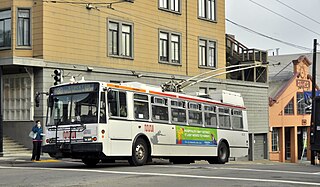
Electric Transit, Inc. (ETI) was a joint venture between the Škoda group in the Czech Republic and AAI Corporation in the United States which made trolleybuses for the Dayton and San Francisco trolleybus systems, constructing a total of 330 trolleybuses. ETI was formed in 1994, and ownership was divided as 65% by Škoda and 35% by AAI. The latter was a wholly owned subsidiary of United Industrial Corporation. Up to that time, Škoda had built more than 12,000 trolleybuses since 1935, but none for cities outside Europe and Asia. The ETI joint venture was dissolved in 2004, shortly after an unsuccessful bid to supply trolleybuses to Vancouver.

Nr II is a class of articulated six-axle, chopper-driven tram operated by Helsinki City Transport (HKL) on the Helsinki tram network. All trams of this type were built by the Finnish metal industry corporation Valmet between the years 1983 and 1987.

HM V is a class of two-bogie four-axle tram operated by Helsinki City Transport on the Helsinki tram network. All trams of this type were built by the Finnish tram manufacturer Karia in 1959.
Rocar was a van, light truck, bus and trolleybus manufacturer based in Bucharest, Romania. The firm also produced light offroad vehicles and later heavy road vehicles. During its existence, the company produced over 350,000 vehicles.
Mexicana de Autobuses, S.A., or MASA, was a major bus and coach manufacturer located in Mexico. Formed in 1959, it was owned by the Mexican government until being privatized in 1988. It was the country's second-largest bus manufacturer when it was acquired by Volvo, in 1998, and renamed Volvo Buses de México, S.A.

Trolleybuses served the London Passenger Transport Area from 1931 until 1962. For much of its existence, the London system was the largest in the world. It peaked at 68 routes, with a maximum fleet of 1,811 trolleybuses.

The Seattle trolleybus system forms part of the public transportation network in the city of Seattle, Washington, operated by King County Metro. Originally opened on April 28, 1940, the network consists of 15 routes, with 174 trolleybuses operating on 68 miles (109 km) of two-way parallel overhead lines. As of the first quarter of 2024, the system carries riders on an average of 42,600 trips per weekday, comprising about 18 percent of King County Metro's total daily ridership.

The Dayton trolleybus system forms part of the public transportation network serving Dayton, in the state of Ohio, United States. Opened on April 23, 1933, it presently comprises five lines, and is operated by the Greater Dayton Regional Transit Authority, with a fleet of 45 trolleybuses. In 2023, the system had a ridership of 2,163,400, or about 6,000 per weekday as of the first quarter of 2024.
Veikko Muronen was a Finnish MSc (diplomi-insinööri) and heavy vehicle designer. He worked as a manager of the Engineering Department of Vanajan Autotehdas (VAT) and later Suomen Autoteollisuus (SAT). Muronen is best known as the inventor of Vanaja lifting tandem system and designer of the last Vanaja series, "Muros-Vanaja".

Vanajan Autotehdas Oy (VAT) was a producer of heavy vehicles based in Hämeenlinna, Finland. The company was founded as Yhteissisu Oy in 1943 by the Finnish government and a number of major Finnish companies with the aim of producing lorries and buses for the Finnish Defence Forces. World War II was over before the company could start series production; it was renamed Vanajan Autotehdas and the marque became Vanaja. Subsequently, the production consisted of outdated lorry models, partly built from military surplus materials. After overcoming initial difficulties, the company modernised its products, became profitable and grew until the mid-1950s. Many major components, including engines, were imported. Diesel engines became widely available in 1955, and in 1959 VAT introduced its most significant innovation, the full load lifting tandem axle mechanism, which improved off-road capability significantly; the system is now used in Sisu vehicles.
As of 2012 there were around 300 cities or metropolitan areas where trolleybuses were operated, and more than 500 additional trolleybus systems have existed in the past. For complete lists of trolleybus systems by location, with dates of opening and closure, see List of trolleybus systems and the related lists indexed there.

Sisu M-series is a 2–4-axle forward control lorry model series made by the Finnish heavy vehicle producer Suomen Autoteollisuus (SAT) in 1969–1984. The series consists of 4×2-driven M-161, 6×2-driven M-162, 6×4-driven M-163 and 8×2-driven M-168. Typical applications were logging trucks, tankers and long-distance transportation haulers which pulled conventional and semi-trailers. The permissible payloads varied from ca. 9 tonnes up over 18 tonnes.
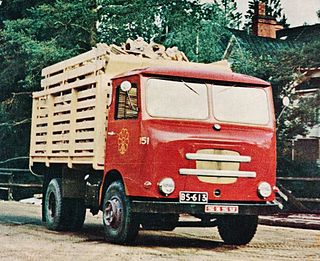
Sisu KB-24 is a two-axle lorry and special vehicle chassis made by the Finnish heavy vehicle manufacturer Suomen Autoteollisuus (SAT) from 1955 to 1960. It is a six-tonne delivery lorry planned to operate on narrow streets in Finnish cities.
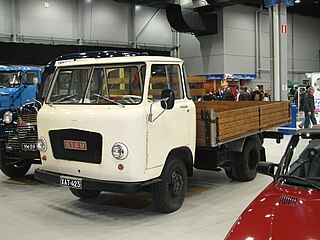
Sisu KB-124 was a two-axle lorry and special vehicle chassis made by the Finnish heavy vehicle manufacturer Suomen Autoteollisuus (SAT). It was a six-tonne delivery lorry which was developed to follow the KB-24. The KB-124 was produced from 1961 until 1968, when it was replaced by the similar KB-121 with increased permitted load. Production ceased in about 1972.
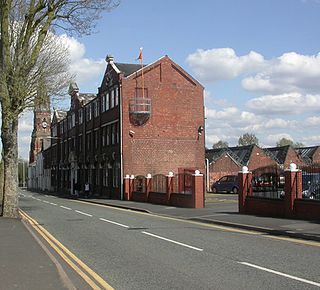
Sunbeam Commercial Vehicles was a commercial vehicle manufacturing offshoot of the Wolverhampton based Sunbeam Motor Car Company when it was a subsidiary of S T D Motors Limited. Sunbeam had always made ambulances on modified Sunbeam car chassis. S T D Motors chose to enter the large commercial vehicle market in the late 1920s, and once established they made petrol and diesel buses and electrically powered trolleybuses and milk floats. Commercial Vehicles became a separate department of Sunbeam in 1931.
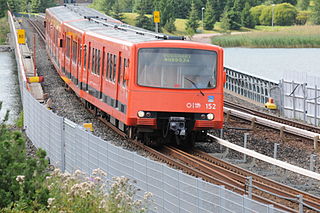
The HKL Class M100 is the first and oldest class of metro trains in use on the Helsinki Metro. One train consists of two individually numbered cars. A total of 42 units were manufactured between 1977 and 1984.
References
- 1 2 3 4 5 6 Blomberg, Olli (2006). Suomalaista Sisua vuodesta 1931 – Monialaosaajasta kuorma-autotehtaaksi (in Finnish). Karis: Oy Sisu Auto Ab. pp. 315, 318. ISBN 952-91-4918-2.
- 1 2 3 4 "HKL: Johdinauto 1 / HKL Trolleybus 1" (in Finnish and English). Suomen Raitiotieseura ry. Retrieved 2013-03-29.
- 1 2 3 4 5 6 7 8 9 10 11 12 13 14 15 16 17 18 19 20 21 Alameri, Mikko (1987). "Johdinautoliikenteen elvytyspyrkimykset ja Koejohdinautoprojekti" (PDF). Suomen Raitiotieseura ry (orig. Raitio 4/1987). Retrieved 2013-03-29.
- ↑ miller, Denis (1987). Maailman moottoriajoneuvot – Hyötyajoneuvot vuodesta 1769 nykypäivään – SWS (in Finnish). Turku: Tekninen Kustannusliike Oy. p. 285. ISBN 951-9364-32-3.